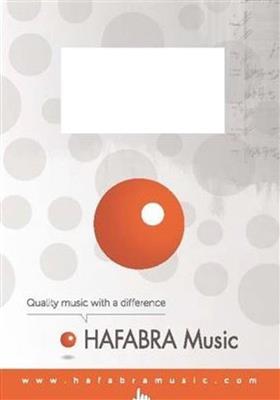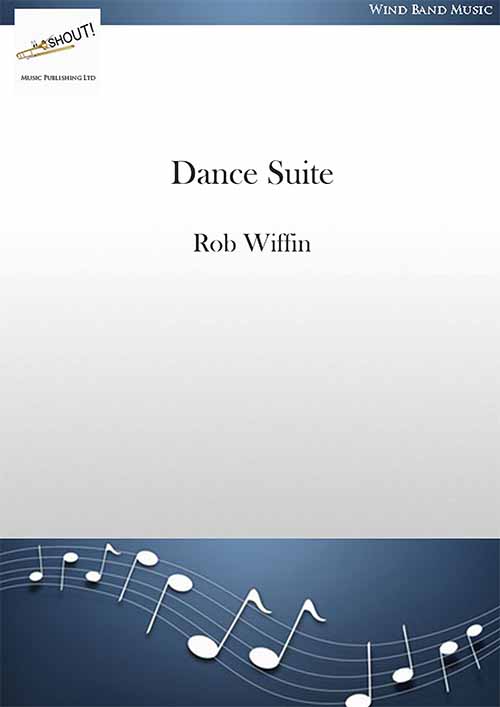Results
-
 £109.99
£109.99Arctic Funk - Torstein Aagaard-Nilsen
Arctic Funk might just as well have been a flashing sequel to a scene from Leonard Bernstein's West Side Story. Popular music but with a difference, as indicated by the title. The work's quiet section temporarily soothes down the heated passion of its two corner movements, but everywhere else action is required throughout. The work was commissioned in 1991 by Troms? Brass. Situated just above the Polar Circle, Troms? is one of Norway's northernmost towns. Topographically, the town probably comes across as freezing cold, but Troms? is famous for its 'warm' night-life. The Composer: In Arctic Funk you might get a feeling of a party that takes place betweenice-rocks and snow-capped mountains.
Estimated dispatch 7-14 working days
-
 £174.99
£174.99The Legend of Flathead Lake - Carl Wittrock
In Scotland, the monster of Loch Ness is a hot issue, but the American state of Montana enjoys a comparable phenomenon going by the name of Montana Nessie. In the western part of this remote state lies Flathead Lake: a lake of 45 kilometres /38miles in lenght and 24 kilometres /15 miles breath. At several places, its depth exeeds 100 metres.Nessies discovery takes us back to the year 1889, when captain James Kerr aboard the passengership U.S.Grant was startled by a ship unknown to himsuddenly approaching his vessel across Flathead Lake. However, it turned out not to be a ship but an undefinable animal of immense size.From that moment onwards, life would never be the same again in and around Flathead Lake.The composer wasinspired by the story, and summarized the events into a symphonic poem, but from a surprising angle:that of the monster. The exiting opening allows us to follow the monster in its natural surroundings.The fast follow-up movement depictsMontana Nessie trotting and frolicking about the Montana woods and prairies.From its abode, it thorougly enjoys everything around it. This period abruptly ends in a short climax (Chimes). The solo for cor anglais marks a new period in themonsters life.The presence of people has a paralizing effect and the apprehensive atmosphere of the slow movement may be felt profoundly.The monster observes and mildly teases the ship. Abhor sounds force the ship to a withdrawal.The movingmusical continuation depicts the triumphant monster dancing an ironic waltz. The monsters fear and anger at the intrusion of his freedom run through the piece like continuous threads, and develop into the works final theme.
Estimated dispatch 7-14 working days
-
 £117.80
£117.80Freedom Defended - Rossano Galante
Inspired by the non-violent civil rights protest of February 1, 1960 against a segregated lunch counter in Greensboro, NC, Freedom Defended strives to encapsulate the story of this now historic event. Commissioned by the band directors of the North Carolina Central District and East Central District Bandmasters Associations, this four movement piece honors each of the North Carolina Agricultural and Technical State University students known as the "Greensboro Four", Joseph McNeil, Franklin McCain, Ezell Blair Jr., and David Richmond. Their actions directly led to the Civil Rights Act of 1964 which mandated desegregation in public spaces. Movement 1 (Da Sogno) - The opening thematic material is dream-like and idyllic as the "Greensboro Four" enter the Woolworth Store at 132 South Elm Street and peacefully sit at the lunch counter and order coffee. Movement 2 (Con Fuoco) - The piece takes a dark turn when they are refused service and are told "We don't serve Negros here". The music is somewhat dissonant and rhythmic but a heroic theme captures the tenacity and courage of these brave young men. Movement 3 (Molto Cantabile) - A plaintiff theme portrays the hopelessness the four freshmen faced as they continued to be refused service until they leave when the store closed that night. Movement 4 (Con Spirito) - Undeterred, the "Greensboro Four" returned the next day, this time joined by more than twenty other black students. While they were again refused service, the sitins began to attract media attention and each day more and more students, both black and white, joined the cause. By February 4th, over 300 students staged sit-ins not only at the Woolworth Store but also the lunch counter at Greensboro's S. H. Kress & Co. The music is rejoicing and uplifting, similar to the opening statement, but now fully orchestrated and more fully developed. Coda - a quiet theme based on the motives from the opening thematic material brings the work to a reflective close as we remember these four men who, in the face of adversity, stood up for equality for all men and women.
Estimated dispatch 7-14 working days
-
£55.00
Capriccio - Gustav Holst
Holst composed this short, light-hearted but tuneful work in 1932, while on a visit to the USA, for Nathaniel Shilkret's concert jazz band. He was asked to use a folk tune but invented one of his own. The piece was not performed and remained in manuscript. This version for wind band was arranged by John Boyd with the approval of Imogen Holst.
In stock: Estimated delivery 1-3 days
-
£120.00
MonsterThrash (CB) - Paul Saggers
Prepare for the fright of a lifetime as MonsterThrash takes you to the murky depths of the ocean where all sorts of unsavoury creatures lurk, waiting to devour you! From Ancient Greek mythology, Hydra a Serpentine creature with many heads guards the underworld. You can try and chop its head off but two will grow back! Be sure to escape this first monster quickly as its poisonous breath and blood will kill you instantly! Next up to thrash you are the wickedly enchanting sirens, who aim to seduce you with their looks and mesmerising singing, but will carve you up for their dinner! If you've made it this far... be prepared to face your final threat, The Leviathan! Often described as an Dragon dwelling in the watery abyss. Enormous in size, the Leviathan is said to represent the forces of chaos. When the Leviathan is hungry he sends forth from his mouth a heat so great it makes the water of the deep boil. Only the bravest of sailors can withstand these wicked beasts, if your not up to the MonsterThrash, be prepared to spend the rest of your days in the depths of Davy Jones' Locker!
Estimated dispatch 7-14 working days
-
£142.00
Diversity (CB) - Yves Wuyts
Diversity is written for the royal fanfare band 'De Werkmanszonen' from Zichen-Bolder (Riemst) where Yves has been a conductor since 2005 and is dedicated to their chairman Sylvain Tans. The title 'Diversity' refers to the diversity of styles in the work but also to the diversity of a chairman. The work consists of three continuous movements. Part one starts with a fanfare motif that is later developed in a pop/rock and funky style. The second theme has a medieval character with a twist of the first theme. In the second movement we hear several lyrical solos. After the cadenza, the medieval theme returns but now in a more mysterious character. After this we come to the climax of this movement, which fades out into the third movement. The last movement has a resolute character where several previous motives and the opening theme are repeated to end with a dazzling finale!
Estimated dispatch 7-14 working days
-
£113.00
Stations of the Cross (CB) - Dominique Fonteyn
Stations of the Cross tells the story of a real tragedy. In the dramatic opening, we hear the euphonium announce the bad news. The character is trying to process all but doesn't succeed, lots of emotions result in a lament. An inner conflict arises between the emotional and the rational. Over time, he manages himself to take back control but events keep him bother. This is reflected by the continued drums until we suddenly arrive in the lento abbandono. We are witnessing a redemptive event and the grandioso that follows reflects a lot of happiness. Life can finally go on.
Estimated dispatch 7-14 working days
-
 £40.00
£40.00Dance of the Crows
Composed with Renaissance style dances in mind, the composer imagined attending a dance where everything is beautiful, but the dancers are actually crows! With a melody that is simple and primarily on the beat, the compositions starts calmly but gradually becomes more aggressive. Use this to develop the characteristic low clarinet sound, counting and listening skills, easy dynamic contrasts, and independent percussion playing. A fun opportunity for beginning bands to stretch their wings!
Estimated dispatch 12-14 working days
-
 £57.00
£57.00Power - Harold Bennett
This is one of Harold Bennett's (pseudonym of Henry Fillmore) lesser-known marches, but that is no indication of its quality. It is a 6/8 march in standard march form but what is unique about this classic from the original Bennett Band Book is that it is one of the few Bennett marches that includes a "break strain." This makes it a great introduction for younger students to prepare them to play the more challenging marches of Fillmore, Sousa, and others.
Estimated dispatch 12-14 working days
-
 £89.95
£89.95Dance Suite (Concert Band - Score and Parts) - Wiffin, Rob
Dance Suite comprises three dances - Femme Fatale (a tango), Midnight Wish (a rumba) and Wherever I look (a Mambo). The first two movements are fairly straightforward but the mambo is a little more difficult and also requires 4 rather than three trumpets - the fourth part being included in the first trumpet part in the complete suite. The music works best with a string bass or a bass guitar but the bass line is fully cued in the tuba part. Each of the movements is also available separately.Duration: 11.00
Estimated dispatch 7-14 working days

